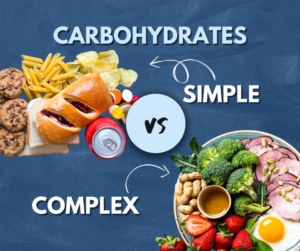Learn more about different possible signs and symptoms of type 2 diabetes and different ways that can help you can prevent developing type 2 diabetes.
WHAT IS TYPE-2 DIABETES?
Type-2 diabetes is an impairment in the way the body regulates and uses glucose (sugar from food) as fuel for energy. Type-2 diabetes was once known as Adult-Onset diabetes, however, the official name has been changed due to the fact that there has been an alarmingly increasing epidemic of obesity during childhood and adolescence in recent years. There are primarily two interrelated problems of concern. Either the pancreas does not produce enough insulin-the hormone that regulates the movement of glucose into fat, muscle, and liver cells-or the cells become resistant to insulin and do not take in the appropriate amount of glucose for immediate energy or fat storage in the liver for future use. The effect of this impairment results in too much sugar circulating in the bloodstream, which can lead to disorders of the circulatory, nervous and immune systems if not diagnosed and treated in a timely manner.
POSSIBLE SIGNS AND SYMPTOMS:
The possible signs and symptoms of type-2 diabetes often develop slowly, or can be silent for years. When signs and symptoms do present themselves, however, they may include:
- Increased thirst
- Frequent urination
- Increased hunger
- Unintended weight loss
- Fatigue
- Blurred vision
- Slow-healing sores
- Frequent infections
- Numbness or tingling in the hands or feet
- Areas of darkened skin, usually in the armpits and neck
POSSIBLE RISK FACTORS:
The possible risk factors that may increase the risk of type-2 diabetes include:
- Obesity
- Fat distribution: Storing fat mainly in the abdomen, rather than the hips and thighs. The risk of type-2 diabetes rises in men with a waist circumference above 40 in. or in women with a measurement above 35 in.
- Inactivity: Physical activity helps control weight, decreases insulin resistance, and increases insulin sensitivity. Moderate exercise drives glucose into cells to be used as energy more efficiently, leaving less in the bloodstream.
- Family history: The risk of type-2 diabetes increases if a parent or sibling has the condition.
- Ethnicity: Due to many contributing factors (Such as discrimination, access to health care resources, etc.) people of certain ethnicities-including Black, Hispanic, Indigenous Peoples, Asian, and Pacific Islanders- can be more likely to develop type-2 diabetes.
- Blood lipid levels: An increased risk of diabetes is associated with low levels of high-density lipoprotein (HDL), or “good” cholesterol, and high levels of triglycerides (LDL).
- Age: The risk of type-2 diabetes increases as one ages, especially after age 45.
- Prediabetes: Prediabetes is a condition in which blood sugar levels are higher than normal, but not high enough to be classified as diabetes. Left untreated, however, it can progress to full-blown type-2 diabetes.
- Pregnancy-related risks: The risk of developing type-2 diabetes increases if gestational diabetes was present during pregnancy, or if the infant weighed more than 9 pounds at birth.
- Polycystic Ovarian Syndrome: A common condition characterized by irregular menstrual periods, excess hair growth and obesity.
TIPS AND SOME PREVENTION STRATEGIES:
There is no cure for type-2 diabetes, but adopting healthy lifestyle choices as soon as possible can help the management of the disease, or prevent the disease from manifesting altogether. Even if there is family history. If, however, diet and exercise are not enough to manage blood sugar, oral diabetes medications or insulin therapy may be prescribed. A healthy lifestyle includes, but, are not limited to, the following:
- Eating healthy foods: Choose foods lower in fat, processed carbohydrates and calories and higher in fiber. Focus on fruits, vegetables and whole grains.
- Getting active: Aim for 30 minutes a day, 5 times a week of moderate to vigorous aerobic activity, such as brisk walking, bicycling, running or swimming.
- Losing weight: Losing 7-10 % of body weight and keeping it off can delay the progression from prediabetes to type-2 diabetes.
- Avoiding a sedentary lifestyle: Being inactive for long periods can increase the risk of type-2 diabetes. Try to get up every 30 minutes and move around for at least a few minutes.
Diabetes is unique to each person. Not everyone will experience the above symptoms, nor will have any or all of the risk factors explained in this article. As always, discuss any issues you may be experiencing with your doctor for proper diagnosis, treatment and management of your diabetes.
By Donna Cross
Type 2 Diabetes Advisor, Certified Reiki Practitioner (RP), The Diabetes App
28 October 2022









